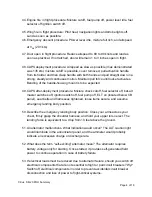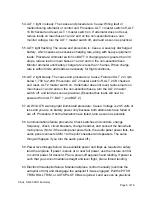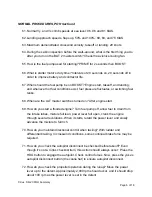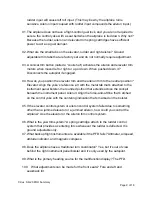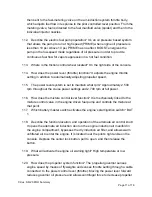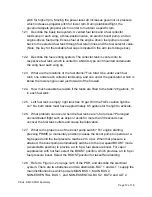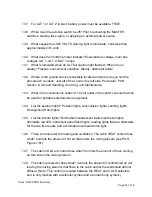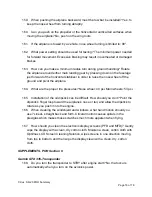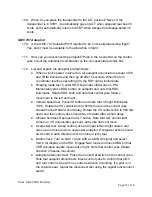
149. Where are the fresh air intakes and outlets? The intakes are in each wing’s
inboard leading edge. The right intake flows to the two right side cabin outlets
and the mixing plenum. The left intake flows to the two left side cabin outlets.
150. Where are the conditioned air outlets? The adjustable front seat outlets are
directly in front of each seat under the instrument panel. The rear seat outlets are
at floor level.
151. Where is the sensor for the stall warning horn? Behind the small hole in the
right wing’s leading edge.
152. Where are the pitot tube and static ports located? Pitot tube: under the left
wing. Static ports: one on each side of the aft fuselage.
153. What does the pitot heat caution light indicate? The pitot heat switch is in the
on position, but the pitot tube is not receiving electrical current.
154. Where is the ELT located and where is it’s control panel located? It is
installed behind the aft cabin bulkhead, and the control panel is installed
immediately below the circuit breaker panel next to the pilot’s right leg.
155. How can you tell if the ELT is transmitting? A flashing light on the control
panel.
156. Where is the hour meter located? Inside the armrest storage compartment.
157. What warnings apply to the Cirrus airplane parachute system: The system
does not require electrical power and can be activated at any time. The
solid-propellant rocket flight path is upward from the parachute cover. Stay clear
of the parachute canister area when the airplane is occupied. Do not allow
children in the aircraft unattended.
158. Describe the parachute activation procedure: Pull the activation T-handle
from its receptacle. Now, clasp both hands around the activation T-handle and
pull straight downward with a strong, steady, and continuous force.
HANDLING, SERVICE, MAINTENANCE, POH Section 8
Cirrus SR-20 POH Summary
Page 15 of 18




